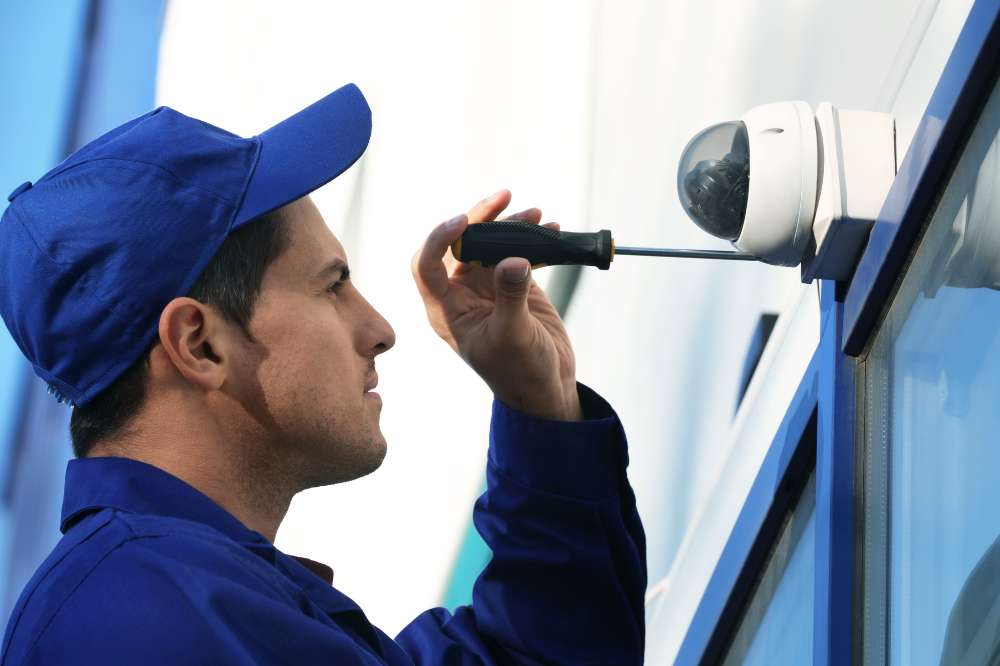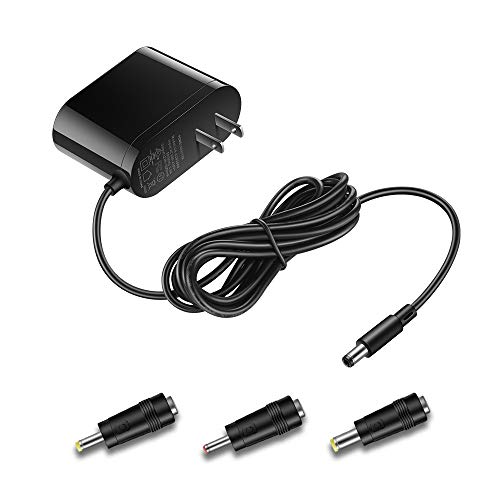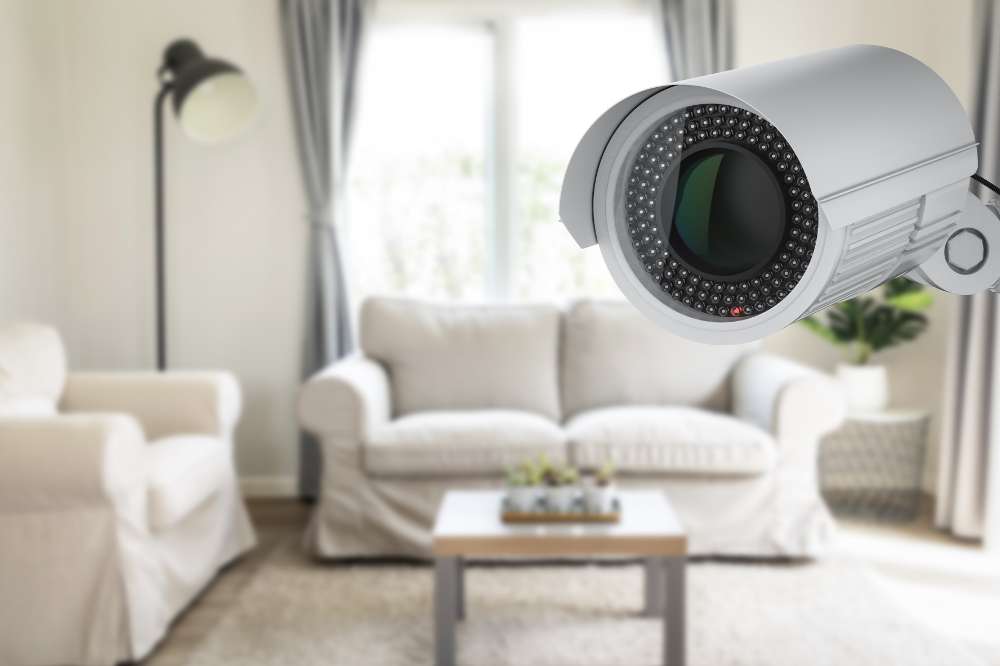Wireless security cameras are essential tools for safeguarding homes and properties, providing convenience and peace of mind. However, like any electronic device, they can encounter issues that affect their performance. Troubleshooting these issues is crucial to ensure that your security system operates effectively.
In this guide, we’ll discuss various wireless security camera issues and provide tips on how to troubleshoot wireless security camera issues. Whether you’re facing connectivity problems, video quality issues, or power supply problems, understanding how to troubleshoot these issues can save you time and frustration.
Common Wireless Security Camera Issues

Wireless security cameras can experience various issues that affect their functionality and reliability. Understanding these most common issues is the first step toward successfully diagnosing and fixing them.
- Compatible with major cable internet providers including Xfinity, Spectrum, Cox and more. NOT compatible...
- [Compatibility] 12V Power Supply Adapter Compatible with Netgear, Linksys, Asus,Motorola, Motorola/Arris...
Here are some of the most frequent issues faced by users:
1. Connectivity Issues
- Weak WiFi Signal: A weak WiFi signal can result in poor camera performance, including intermittent connections and video lag. This issue is often caused by the distance between the camera and the router, physical obstacles, or interference from other electronic devices.
- Network Interference: Interference from neighboring WiFi networks or electronic devices can disrupt the WiFi signal and affect camera connectivity. Common sources of interference include microwave ovens and Bluetooth devices.
- Router Issues: Problems with the router, such as outdated firmware or configuration issues, can also impact camera connectivity. Issues with DHCP settings, port forwarding, or firewall settings may prevent the camera from connecting to the network properly.
2. Video Quality Issues
- Blurry or Pixelated Footage: Poor video quality, including blurry or pixelated footage, can be caused by various factors such as low bandwidth, camera misalignment, or dirty camera lenses. Environmental factors like rain or fog can also affect video clarity.
- Lagging or Freezing Video: Video lag or freezing can occur due to network congestion, insufficient bandwidth, or hardware limitations. This issue may manifest as delayed video feeds or choppy playback, making it difficult to monitor live footage effectively.
3. Power Supply Issues
- Insufficient Power: Inadequate power supply to the camera can lead to intermittent operation or complete shutdowns. This issue may arise due to a faulty power adapter, insufficient power from the outlet, or power surges.
- Faulty Power Adapter: A malfunctioning power adapter can cause the camera to lose power intermittently or fail to power on at all. Issues with the adapter may include frayed wires, loose connections, or internal damage.
- Battery Drain: If the camera is battery-powered, excessive battery drain can lead to frequent recharging or operational issues. Factors such as extreme temperatures, high camera activity, or aging batteries can contribute to accelerated battery drain.
Identifying the specific issue affecting your wireless security camera is the first step toward resolving it. In the following sections, we’ll discuss troubleshooting steps to address these common issues effectively.
Troubleshooting Steps
1. Connectivity Troubleshooting
- Check WiFi Signal Strength: Begin by checking the WiFi signal strength at the location of your camera. Weak signals can lead to connectivity issues. Use a smartphone or laptop to assess signal strength and consider relocating the camera or router if necessary.
- Reposition of the Camera and Router: Physical obstructions or distance from the router can impact connectivity. Try repositioning both the camera and router to improve signal strength and reduce interference.
- Reduce Network Interference: Identify and minimize sources of interference such as other electronic devices, neighboring WiFi networks, or appliances. Position the router away from potential sources of interference and consider using WiFi channels with less congestion.
- Reboot the Router: Sometimes a simple router reset will alleviate connection problems. Power cycle the router by disconnecting it from the power supply, waiting a few minutes, and then reconnecting it. Allow the router to restart and reconnect with the network.
2. Video Quality Troubleshooting
- Adjust Camera Settings: Check the camera settings for adjustments that can enhance video quality. Settings such as resolution, frame rate, and exposure may affect video clarity. Experiment with different settings to find the optimal configuration.
- Check the Camera Lens and Clean it if Necessary: Dirt, dust, or smudges on the camera lens can degrade video quality. Use a soft, lint-free cloth to gently clean the lens and remove any debris that may be affecting image clarity.
- Upgrade Firmware: Outdated firmware can impact camera performance and video quality. Check for firmware updates from the manufacturer’s website and follow instructions to upgrade the camera firmware to the latest version.
3. Power Supply Troubleshooting
- Replace or Recharge Batteries: If your wireless security camera is battery-powered, low battery levels can affect performance. Replace or recharge the batteries as needed to ensure continuous operation. Consider investing in high-quality rechargeable batteries for long-term cost savings.
- Use a Backup Power Source: In areas prone to power outages or fluctuations, consider using a backup power source such as a backup battery or solar panel. Backup power sources can help ensure uninterrupted operation of your wireless security cameras during power outages.
- Install a UPS (Uninterruptible Power Supply): For added protection against power surges and outages, consider installing a UPS for your camera system. A UPS provides backup power and surge protection, safeguarding your cameras and recording devices from damage caused by power fluctuations.
By following these troubleshooting steps, you can identify and resolve common issues with your wireless security cameras, ensuring optimal performance and reliability for your home or business surveillance system.
Advanced Troubleshooting Techniques
1. Resetting the Camera
Sometimes, a factory reset can resolve persistent issues with wireless security cameras. Refer to the manufacturer’s instructions to perform a reset, typically involving pressing a reset button or using a pin to reset the camera to its default settings. Be aware that resetting the camera will erase all previous settings, so make note of any configurations before proceeding.
2. Updating Firmware
Regular firmware updates can address bugs, improve performance, and add new features to your wireless security camera. Check the manufacturer’s website or mobile app for firmware updates and follow the instructions to download and install them onto your camera. Firmware updates typically require a stable internet connection and may take several minutes to complete.
3. Contacting Customer Support
If troubleshooting steps fail to resolve issues with your wireless security camera, don’t hesitate to reach out to the manufacturer’s customer support team for assistance. Provide detailed information about the problem you’re experiencing, steps you’ve already taken to troubleshoot, and any error messages displayed.
Customer support representatives can offer further guidance, and troubleshooting tips, or arrange for repairs or replacements if necessary.
Conclusion
In this article, we’ve explored common issues with wireless security cameras and provided troubleshooting steps to address connectivity issues, video quality problems, and power supply issues. By following these troubleshooting techniques, you can resolve issues and ensure optimal performance of your security camera system.
Don’t let technical issues hinder the effectiveness of your wireless security camera system. By following the troubleshooting steps outlined in this article, you can identify and resolve issues quickly, ensuring peace of mind and reliable surveillance for your home or business.
If troubleshooting steps fail to resolve issues or if you’re unsure about performing advanced troubleshooting techniques, consider seeking assistance from professional technicians or the manufacturer’s customer support team.
Professional help can ensure accurate diagnosis and resolution of complex issues with your wireless security cameras.





